This giant underground battery is a $1-billion clean energy solution
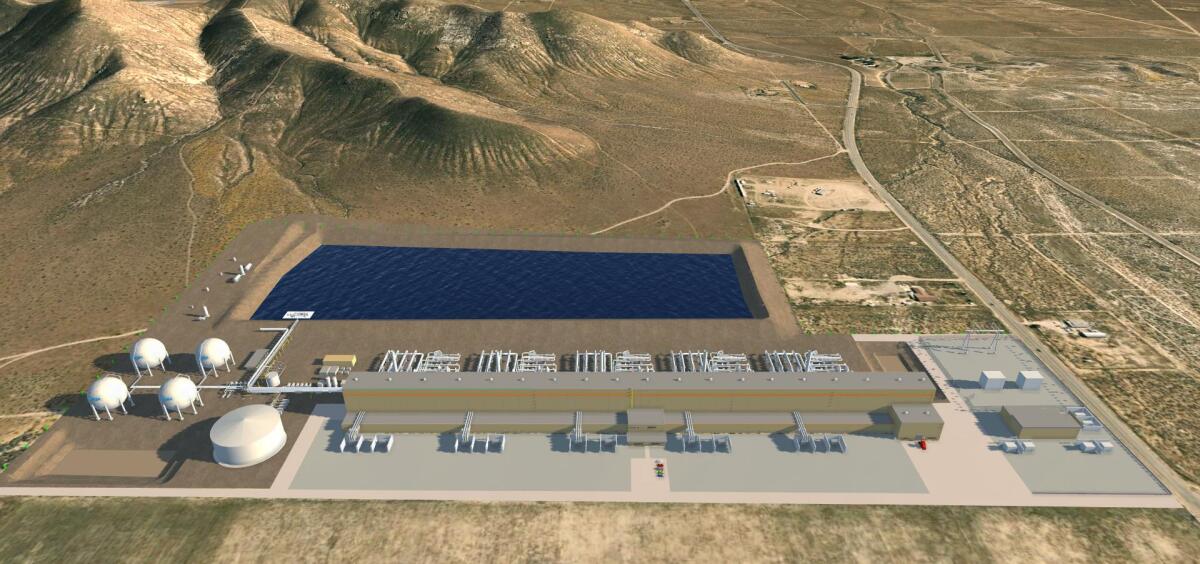
This is the Jan. 12, 2023, edition of Boiling Point, a weekly newsletter about climate change and the environment in California and the American West. Sign up here to get it in your inbox.
What can store solar power for after dark, doesn’t require lithium and costs three-quarters of a billion dollars?
The answer is deep beneath the ground in California’s San Joaquin Valley — or at least, it will be.
A group of local governments announced Thursday it’s signed a 25-year, $775-million contract to buy power from what would be the world’s largest compressed-air energy storage project. The innovative technology could help California — and other states and nations — transition from planet-warming fossil fuels to renewable energy, without causing blackouts.
“We need a diverse fleet of resources. This new technology is a critical component of that,” said Robert Shaw, chief operating officer at Central Coast Community Energy, which signed the 25-year contract. “That’s how we get to 100% renewables.”
Phasing out coal, oil and natural gas is crucial to curbing the worst effects of global warming — including California’s increasingly intense whiplash between drought and downpour, a reality playing out across the state this week in deadly fashion.
Solar panels and wind turbines are the lowest-cost solutions. But moving beyond fossil fuels for power, heating and transportation will require dealing with the reality that solar and wind work only when the sun is shining and the wind is blowing.
Lithium-ion batteries can help. They’re an increasingly crucial tool for keeping the lights on during hot summer evenings.
But lithium prices rose sharply last year, driven in part by surging demand for electric cars. And plans for new lithium mines have spurred opposition from conservationists and Indigenous communities worried about harm to wildlife and sacred sites.
And as useful as lithium-ion batteries have become, they typically provide just a few hours’ worth of electricity storage.
“If you want clean, renewable energy every hour of every day of every month of every year, you need long-duration energy storage,” said Julia Souder, executive director of the Long Duration Energy Storage Council, a trade group.
On afternoons that aren’t as sunny or windy as expected, for example, power companies might not be able to charge lithium-ion batteries as much as needed. And during the winter, there can be long stretches of cloudy, low-wind days.
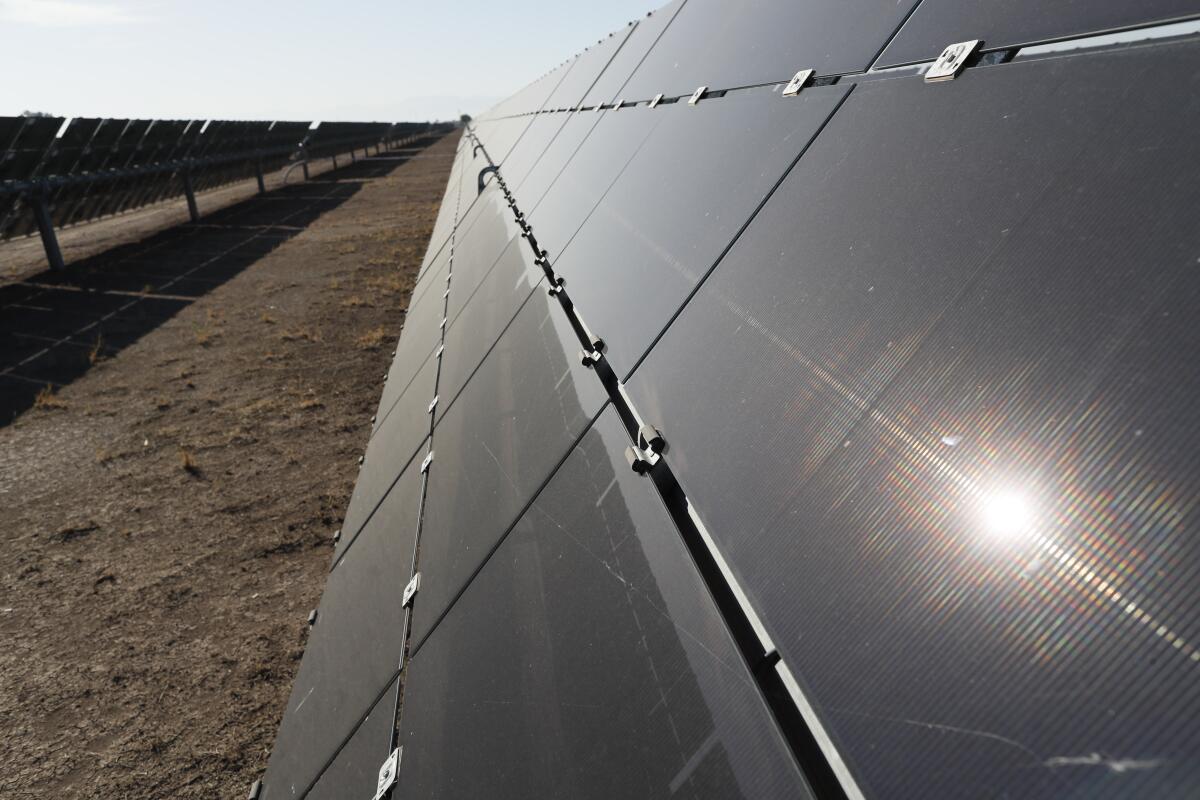
That’s where technologies like compressed air might help.
Here’s how the $1-billion project in California’s Kern County will work: The developer, Hydrostor, will drill three shafts thousands of feet below ground, and send down miners to dig out a series of rows and columns. When the project is ready to go in 2028, the underground caverns will have a collective volume equivalent to two football fields about 100 yards high.
During times of day when electricity is cheap — such as sunny afternoons when California has more solar power than it needs — Hydrostor will use that low-cost energy to push air down into the caverns. Think of it like storing sunlight in a bottle.
When Hydrostor’s customer, Central Coast Community Energy, needs to draw on the stored power — on a cloudy January day, for instance — the company will open a valve and funnel the high-pressure air through a turbine, generating electricity.
It’s not the only long-duration storage technology on the market. But Hydrostor President Jon Norman says it’s ready to go.
“We’re going to need all of these solutions,” he said. “But let’s not forget that compressed air is available today.”
The technology has traditionally been limited to places with naturally occurring underground salt domes, where companies can pump down water to dissolve the salt and hollow out large caverns. For decades, there were only two operating compressed-air storage projects worldwide, at salt domes in Alabama and Germany.
Another challenge is that those projects depend in part on natural gas. The fossil fuel is burned to heat the compressed air as it leaves the salt caverns, because its temperature would otherwise drop significantly as it expands, reducing efficiency.
Hydrostor, which is based in Toronto, is one of several startups working on fixing those problems. The company says it’s figured out a way to capture and reuse the heat generated when air is compressed, eliminating the need to burn gas. It’s also figured out a way to make the mechanics work in areas where caverns must be dug out of hard rock, rather than salt.
As with any new technology, it’s hard to know for sure if it will work as advertised. So far, Hydrostor has built a single small commercial project in Canada. The Willow Rock facility in Kern County will be one of its first two large-scale developments.
But outside experts who have examined the company’s approach seem reasonably optimistic. Goldman Sachs invested $250 million in Hydrostor last year. The Canadian Pension Plan followed with a $25-million investment a few months later.
Aaron Marks, a senior analyst at energy research firm Wood Mackenzie, says he has “some degree of confidence” in Hydrostor.
“As a first-of-its-kind plant, does that mean its technology is going to work perfectly, with no problems? I doubt it,” Marks told me. “But that’s not a strike against the technology.”
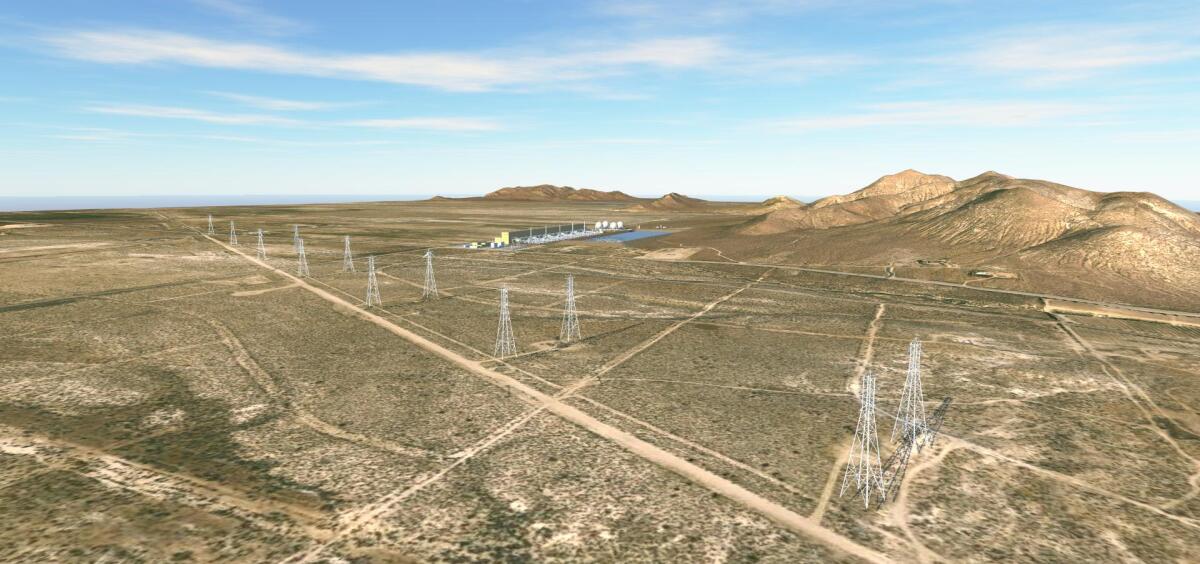
Some of the biggest questions surrounding the viability of compressed air involve economics.
Hydrostor expects its Kern County project to produce just 60% to 65% of the electricity it consumes — a larger loss of energy than with lithium-ion batteries and several other kinds of storage. Given the lower efficiency, experts say compressed air is a relatively pricey alternative to batteries — a problematic reality at a time when the electricity rates paid by California residents are soaring.
And although compressed air hasn’t raised the same level of environmental concern as pumped hydropower, the most common form of long-duration storage, some activists have raised questions about the technology’s impact on wildlife habitat.
In comments to the California Energy Commission — which still needs to issue a permit before Hydrostor can start construction — the conservation nonprofit Defenders of Wildlife wrote that the Willow Rock project, depending on its design, “could significantly impact several special-status species,” including the burrowing owl, desert tortoise, Swainson’s hawk and Joshua tree.
“We do not believe that sufficient data has been provided by the project applicant,” Defenders wrote.
Asked about those concerns, Hydrostor said in an email that recent habitat surveys will “allow for further review by the dedicated agencies,” and that the company “has a rigorous biological survey program planned for spring and summer 2023.”
Even with the potential drawbacks, Central Coast Community Energy — a government-run “community choice” agency that supplies electricity to 450,000 homes and businesses in five counties — saw good reason to invest in compressed air.
Unlike lithium-ion batteries, which degrade over time and must be replaced, compressed air caverns can bank power for decades without loss of efficiency. They can also supply the grid for longer than a four-hour battery. The 200 megawatts under contract to Central Coast — part of Hydrostor’s 500-megawatt project — will provide eight hours of backup power.
Other electricity providers have responded to a state mandate for longer-duration storage by investing in lithium-ion batteries capable of discharging for eight hours. They cost more than four-hour batteries but are still relatively affordable.
Central Coast Community Energy decided to go a different route — in part because to avoid volatility in the lithium market, and in part to help prove out a technology that the agency’s elected officials believe will ultimately benefit customers.
“It takes somebody to make that initial investment,” Shaw said. “Our board has given that direction.”
This isn’t the first time Central Coast has stepped out ahead of other electricity providers on an innovative storage technology. In 2021, the agency unveiled three contracts for vanadium flow batteries that will also supply eight hours of power.
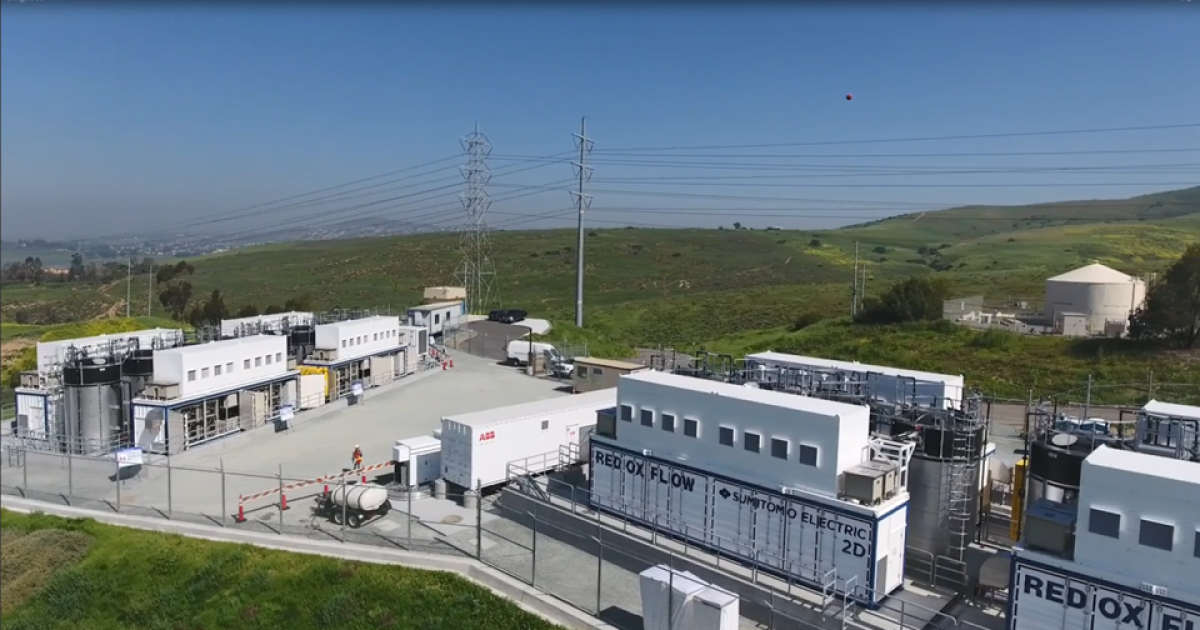
At the same time, Central Coast isn’t the only electricity provider investing in new kinds of long-duration storage.
Utility company Pacific Gas & Electric, for instance, announced last week it’s partnering with Energy Vault on a hybrid system combining lithium-ion batteries and hydrogen fuel cells to help power the city of Calistoga during disruptions of the electric grid.
The Los Angeles Department of Water and Power, meanwhile, is also investing in green hydrogen. DWP plans to use excess solar and wind power to split off hydrogen atoms from water molecules, then burn that hydrogen when it needs extra electricity. The hydrogen will be stored in underground salt caverns — caverns DWP had initially contemplated using for compressed air.
Eric Gimon, a senior fellow at the San Francisco-based research firm Energy Innovation, told me he’s skeptical about compressed air storage playing a major role on the power grid. But he’s glad the technology is being given a chance to succeed.
“It’s certainly good to expand the quiver of tools,” he said.
State Sen. John Laird is hopeful. The Santa Cruz Democrat wrote legislation last year — signed into law by Gov. Gavin Newsom — requiring the state to get 90% of its electricity from climate-friendly sources by 2030, and 95% by 2035. But right now, Laird told me, the state isn’t on track to meet those goals — or a longer-term target of 100% clean energy by 2045.
Laird thinks the Hydrostor project, which will supply power to some of his constituents, is a useful development.
“We need every tool we can. And this is one,” he said.
As always, time will tell. Until then, here’s what’s happening around the West:
TOP STORIES
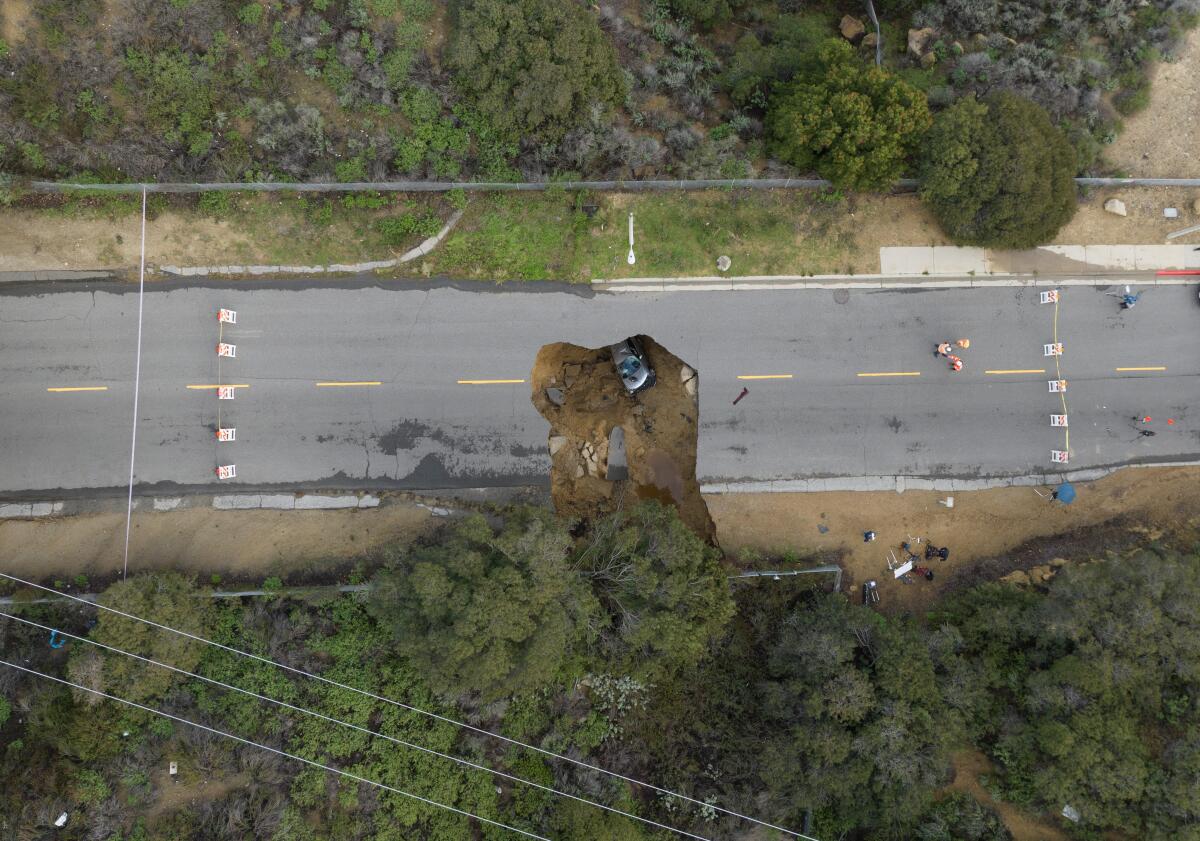
“A toddler crushed by falling trees. A 5-year-old swept away by floodwaters before his mother’s eyes and still missing. Three bodies recovered from inside or near submerged vehicles on a rural stretch of freeway.” My colleague Hayley Smith surveyed the damage from the epic storms still ravaging California, which have killed at least 19 people. They’re only the latest manifestation of global warming, which is intensifying the state’s already-dramatic swings between not enough water and too much. As always with the climate crisis, the most vulnerable face the greatest risks. The Times’ Anita Chabria and Erika D. Smith wrote about unhoused Californians stranded and flooded along the Sacramento River. Follow The Times’ comprehensive storm coverage here, including crucial advice on preparing for evacuation, driving in heavy rain and surviving power outages.
Even as the skies unleashed their fury on California, Gov. Gavin Newsom proposed slashing funds for electric cars and other clean energy initiatives. Just months after pushing a record $54-billion climate budget through the Legislature, Newsom wants to pare back spending to $48 billion, citing high inflation and a large projected budget deficit, per The Times’ Sacramento bureau. By way of context, scientists released data this week showing 2022 was the fifth-hottest year on record — making the last eight years the eight hottest ever recorded, as the New York Times’ Henry Fountain and Mira Rojanasakul report.
A member of the U.S. Consumer Product Safety Commission said the agency would consider banning the manufacture of gas stoves, or taking other steps to reduce indoor air pollution from cooking with gas. Here’s the story from Bloomberg’s Ari Natter. The agency quickly walked back those comments in response to a political backlash, saying a ban isn’t on the table. But it’s clear federal officials are beginning to respond to research showing a link between gas stoves and health harms — including a new study that estimates cooking with gas is responsible for 12% of U.S. childhood asthma cases. That translates to 650,000 kids with asthma — and a level of risk comparable to secondhand smoke exposure, the Boston Globe’s Dharna Noor reports.
POLITICAL CLIMATE
The Biden administration plans to tighten restrictions on deadly fine particle pollution, which is worse in California than anywhere else in the country. Public health experts say it’s an important step to limit emissions from cars, trucks and industrial smokestacks — but still not enough to protect people of color and low-income communities that breathe especially polluted air, my colleague Tony Briscoe writes. Meanwhile, in a development that could worsen local air quality, five oil companies are suing Los Angeles to overturn the city’s ban on new oil and gas drilling, The Times’ Dakota Smith reports. Ironically, their argument is that city officials failed to conduct a legally required environmental review before approving the ban last month.
The propane industry is quietly paying TV stars to promote its polluting product as part of a sweeping campaign against electric heating and cooking — funded by a federally sanctioned fee on propane sales. Here’s the wild investigation from the New York Times’ Hiroko Tabuchi, who writes that the money behind the industry campaign is supposed to be used for things like research and safety. It’s just the latest example of the broader fossil fuel industry fighting electrification, similar to stories I’ve written previously involving natural gas companies. Speaking of which, if you’re a Southern California Gas customer wondering why your bill is so high this month, here’s Russ Mitchell’s explanation of why gas prices are going through the roof.
President Biden promised to create Avi Kwa Ame National Monument in Nevada, to protect lands sacred to the Fort Mojave Indian Tribe. But a Utah lawsuit designed to gut the president’s powers under the Antiquities Act could get in the way, Bloomberg’s Bobby Magill writes. The Beehive State’s long-simmering fight against national monument designations is a source of frustration not only for Indigenous tribes and conservationists, but also for the outdoors industry, whose customers love to hike, camp and backpack on protected lands. It’s why Patagonia, REI, the North Face and two dozen other companies are boycotting this year’s Outdoor Retailer trade show, which is back in Utah after an extended absence, per Julie Jag at the Salt Lake Tribune.
AROUND THE WEST
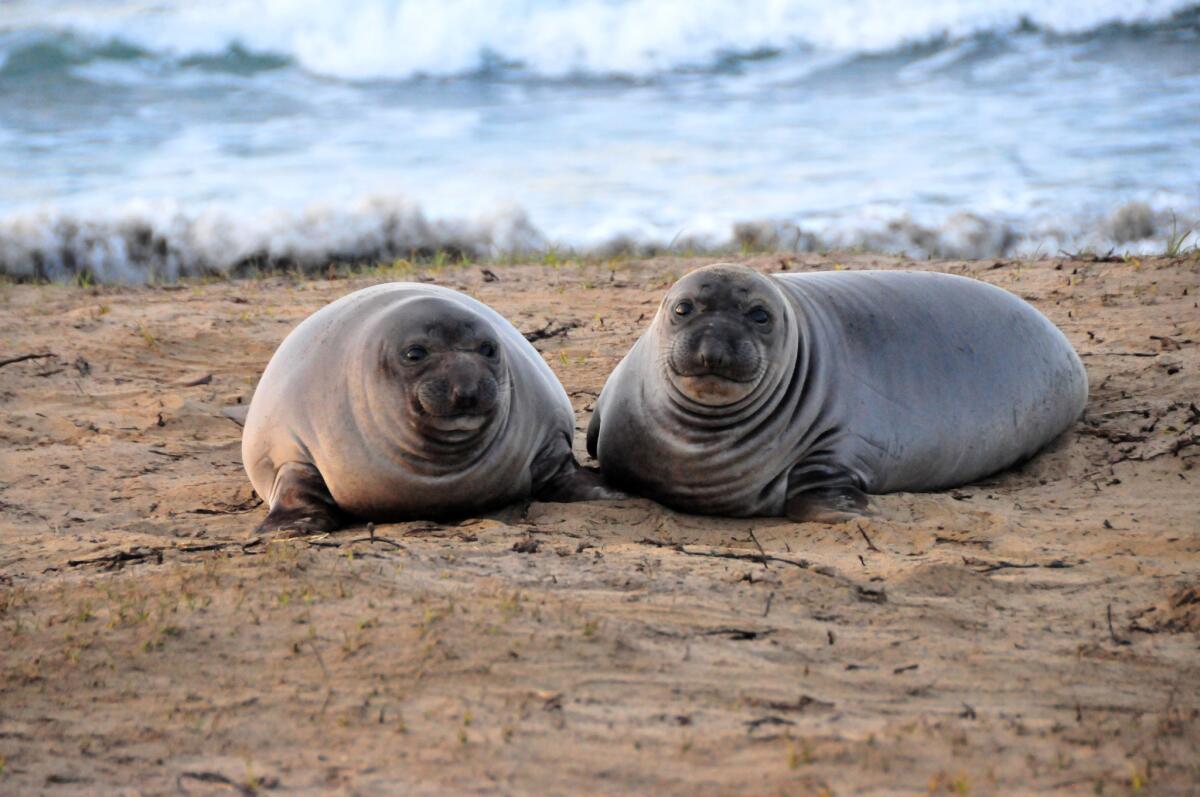
California scientists are using DNA mapping to identify animal and plant populations with the greatest genetic diversity, to figure out which of them are most likely to withstand the ravages of climate change — and then protect their habitat. It’s a “grandiose 21st century experiment in advanced genetics,” The Times’ Louis Sahagún writes. Scientists with the $12-million California Conservation Genomics Project are sequencing DNA samples from 235 marine, freshwater and terrestrial species.
Los Angeles County residents voted in 2018 to raise hundreds of millions of dollars annually for stormwater capture projects, to help the region retain as much water as possible when it does, occasionally, rain. But this week’s floods offer a harsh reminder that it will take decades to build all the necessary infrastructure, as my colleague Hayley Smith reports. In the meantime, we probably ought to be thinking about pulling back homes and other human infrastructure from rivers, to protect against climate-fueled floods — an idea the New York Times’ Christopher Flavelle and Raymond Zhong wrote about.
President Biden signed long-awaited legislation securing Colorado River water rights and funding water infrastructure for several Native American tribes. The law will help the Colorado River Indian Tribes benefit from their 719,000 acre-foot allotment, possibly by leasing some that water to farms or cities, the Arizona Republic’s Debra Utacia Krol reports. In other Western water happenings, new research finds the U.S. and Mexico share a whopping 72 groundwater basins — including five along the border in California and 26 in Arizona. But there’s no legal framework for regulating them, High Country News’ Caroline Tracey writes.
THE ENERGY TRANSITION
The nonprofit behind Burning Man — which builds a temporary city of 80,000 people in Nevada’s Black Rock Desert every year, much of it powered by diesel fuel — is suing the federal government over its approval of a geothermal energy project, citing potential environmental harm. Details here from the Nevada Current’s Jeniffer Solis. As you might recall from my previous coverage, geothermal plants produce clean, climate-friendly energy. And unlike solar and wind farms, they can do it 24/7.
At least so far, promised solar jobs and revenues have not materialized in rural New Mexico communities reeling from the loss of a major coal plant. KUNM’s Alice Fordham visited the communities around the former San Juan Generating Station, which closed last year, and found that supply-chain constraints have delayed the badly needed solar boom. Further north, in Wyoming, lawmakers still aren’t seriously grappling with the reality that the state’s longtime economic engine — coal — will never be what it once was, even in a best-case scenario. The Casper Star-Tribune’s Nicole Pollack wrote about the grim reality.
Los Angeles Mayor Karen Bass has not yet shared an opinion on a proposal to build a 1.2-mile gondola from Union Station to Dodger Stadium, in time for the 2028 Olympics. Bass’ predecessor, Eric Garcetti, was a major supporter of the gondola, which is being pitched by former Dodgers owner Frank McCourt as an innovative form of climate-friendly transportation. But with Garcetti gone and Bass yet to weigh in, the project’s fate is uncertain, my colleague Rachel Uranga writes.
ONE MORE THING
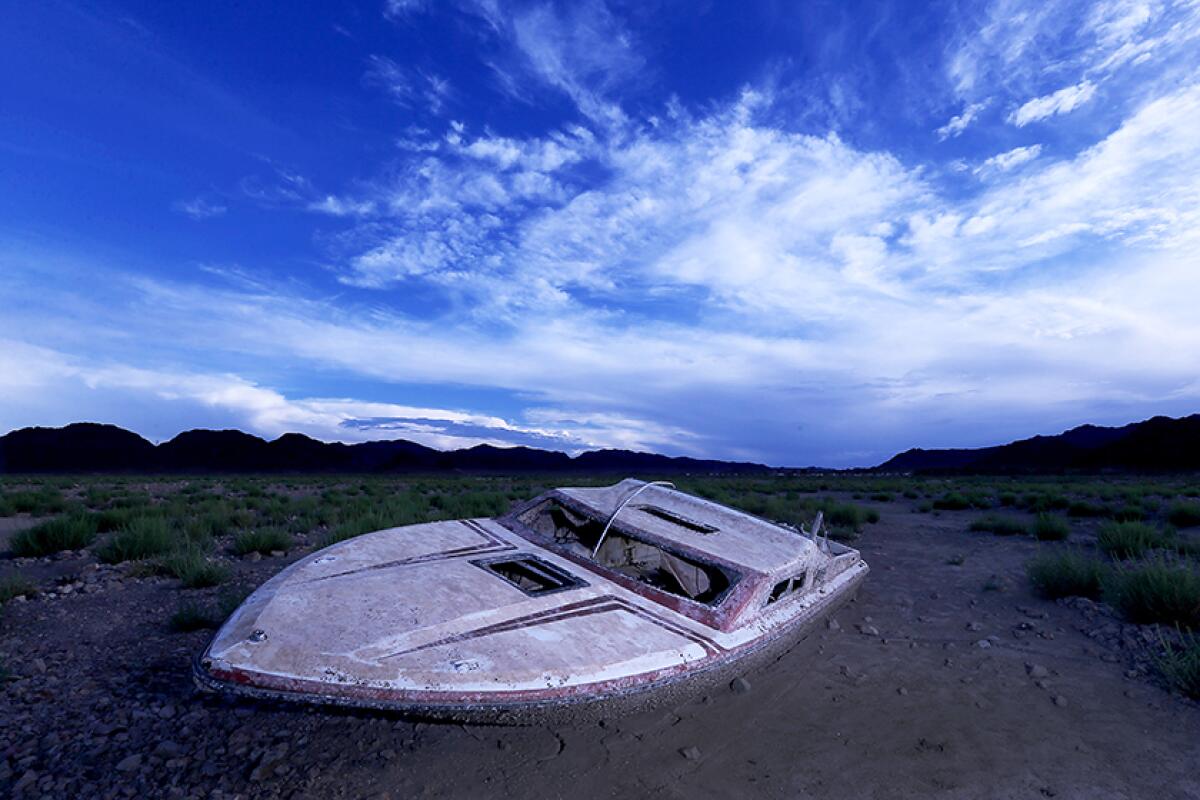
If you’re not listening to the L.A. Times’ daily podcast with Gustavo Arelleno, now’s the time to start. One of the latest episodes is Part 1 of a journey up and down the dying Colorado River, hosted by The Times’ resident water expert, Ian James.
Stay tuned for more!
We’ll be back in your inbox next week. If you enjoyed this newsletter, or previous editions, please consider forwarding it to your friends and colleagues. For more climate and environment news, follow me on Twitter @Sammy_Roth.
Toward a more sustainable California
Get Boiling Point, our newsletter exploring climate change, energy and the environment, and become part of the conversation — and the solution.
You may occasionally receive promotional content from the Los Angeles Times.




